Conservatoire, Thumbplate or Dual: Oboes explained
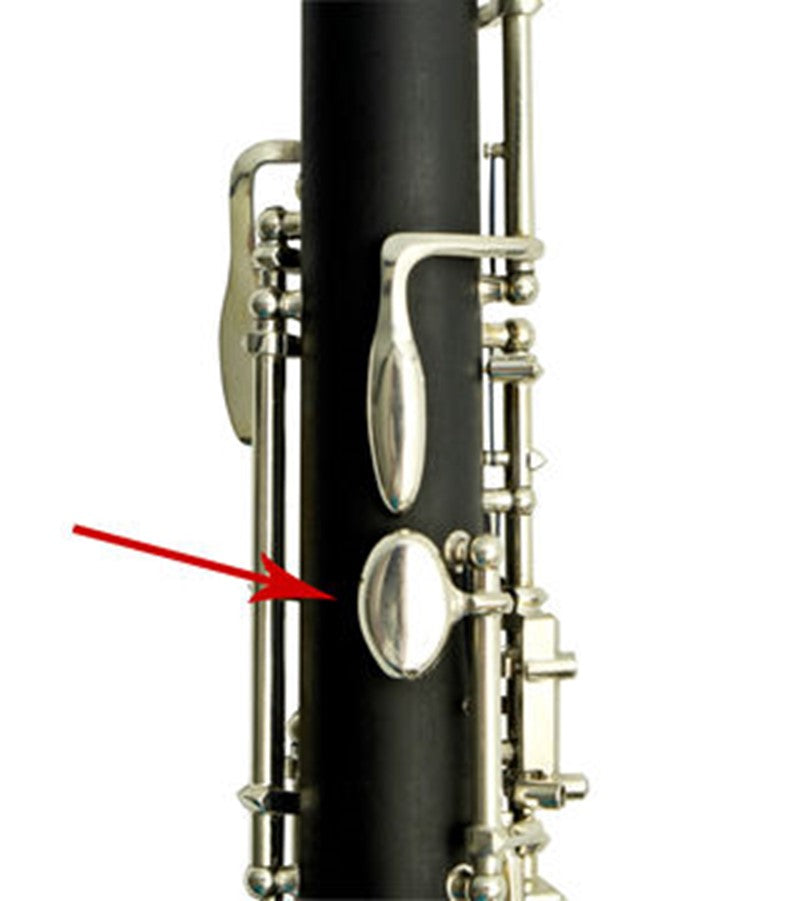
When you start delving into the world of oboes it isn't long until you trip over the issue of a thumbplate, or no thumbplate...
In the UK it is normal for students to start on an instrument with a thumplate. This is the flat round key your left hand thumb would press. Here's what it looks like:
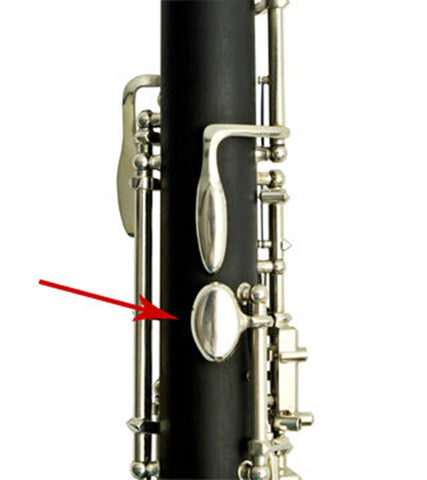
By pressing down this key it actually holds down these two keys on the front of the oboe:
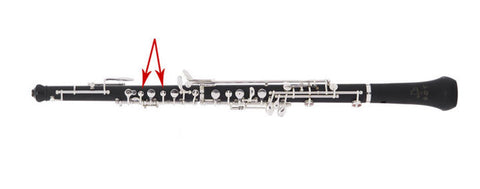
The thumbplate is a key that's held down quite a bit. However, when you play C in the first octave you take it off and those front two keys are released. This means the oboe is carefully balanced between the left index finger and the right hand thumb which hooks under the thumb rest on the second joint of the oboe.
On a conservatoire oboe there is no thumbplate.

You can keep your left thumb on the oboe which makes it easier to balance the oboe between the hands. Those front two keys above are always down. That is until the right index finger presses the F# key, which raises them.
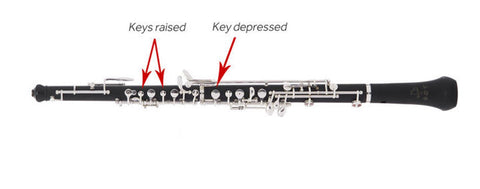
So if you wanted to play a first octave C you would press down both right and left index fingers.
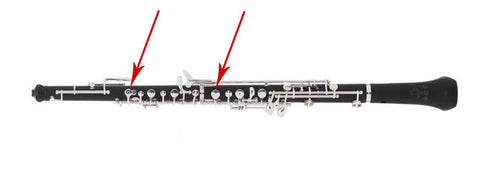
Dual system oboes like our JP181 are ideal for improving players; they have thumbplates, and also the mechanics in place to use conservatoire fingering, hence the term 'dual system'. Oboists have the option of playing C in more than one way!
Our John Packer student beginner oboes are available in both thumbplate (JP081) and conservatoire (JP081C). Our step-up oboe the JP181 is dual system, and we also have a Conservatoire JP181C.
View all the John Packer oboes here

